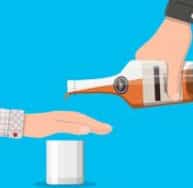
Drinking too much alcohol increases people’s risk of injuries, violence, drowning, liver disease, and some types of cancer. This April, during Alcohol Awareness Month, The Council on Recovery encourages you to educate yourself and your loved ones about the dangers of drinking too much.
In Texas alone, there have been 1,024 drunk driving fatalities over the past year. Of these deaths, nearly half were fatalities to people other than the drunk driver, including passengers, pedestrians, and people in other vehicles. The devastating impact of driving under the influence spreads far beyond the driver alone.
During Alcohol Awareness Month, The Council on Recovery urges everyone to take a look at their own use of alcohol and what it means to drink responsibly. Especially, don’t drink and drive.
If you or a loved one are drinking too much, you can improve your health by cutting back or quitting. Here are some strategies to help you cut back or stop drinking:
- Limit your drinking to no more than 1 drink a day for women or 2 drinks a day for men.
- Keep track of how much you drink.
- Choose a day each week when you will not drink.
- Don’t drink when you are upset.
- Limit the amount of alcohol you keep at home.
- Avoid places where people drink a lot.
- Make a list of reasons not to drink.
If you are concerned about someone else’s drinking, offer to help.
If you or a loved one wants to stop drinking, The Council on Recovery offers many effective outpatient treatment options, including intensive outpatient treatment (IOP), individual counseling, and group therapy. We also facilitate interventions and offer many prevention and education programs related to alcohol and substance use disorders.
For more information, call The Council on Recovery at 713-942-4100 or contact us online.
